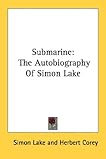Sunday, June 6, 2010
The Royal African Company
Most fans of Pirates of the Caribbean know of the quasi-governmental entity known as the East India Company, which by the way in history did not in the slightest resemble the monstrous organization depicted in the movie. What most folks don't know is that during the 16th through the early 19th centuries maritime trade was an incredibly risky undertaking.
The large, lumbering sailing ships known as the East Indiaman took two years to complete their journey to India and Indonesia where they traded European goods for cloth from India, jewels, and spices, notably cloves from Indonesia. These vessels frequently became victims of storms, pirates, and even hostile governments and trading companies. Although private subscribers invested in these companies, the expenses were staggering.
Consequently, governments frequently underwrote part of the working capital for the enterprises. The English, Dutch and French all had large trading companies for various parts of the world which had transportable raw materials, the spice trade being one of the most lucrative. English, Dutch, and French merchants created East India companies to exploit this trade, which at the time was weakly held by the Portuguese.
Competition among European nations grew so intense that the English decided to start a war with the Dutch in order to win trade concessions. Some authorities claim that as part of the plot to get the Dutch to declare war on the English, King Charles II and his brother, James the Duke of York, formed the Royal African Company. Under this commercial front, they sent Admiral Robert Holmes to seize Dutch West African trade posts from the Cape Verde south to Nigeria with the orders "kill, take, sink or destroy such as shall oppose you."
The Dutch did act as King Charles and James had hoped, allowing the English to declare war on the Dutch after they announced on February 22, 1665 that they would attack English shipping. The Dutch did retake some of their West African holdings, but the English held on to a strategic fort. Known as the Castle, this fort allowed the Royal African Company to control trade along the West African coast.
The Royal African Company traded in gold, ivory and slaves from the late 1660s through 1698. Slaves purchased by the Royal African Company were branded with the initials "DY," which stood for "Duke of York."
In 1698, it lost its exclusive charter right to traffic in slaves, which amounted to about 5,000 African captives a year. Merchants from Bristol, some of whom were secretly "poaching" on Royal African Company rights, quickly boosted the number of slaves taken to 20,000 a year. In 1723, the Royal African Company dropped its trade in African slaves in favor of maintaining its gold dust and ivory trade.
The Royal African Company's charter allowed in to maintain its own forts and trade centers along with its own soldiers and merchants known as factors. It also had a few coastal and river vessels for trade and enforcement of its concession along the West African Coast. Company employees signed on for a seven year tour. Thanks to tropical diseases and the danger surrounding West African trade, few lived that long.
By the late 1690s, the French Senegal Company (Compagnie de Sénégal) was the principal competitor. French forces did periodically take over British West African trading posts and forts. In fact, the River Gambia fort known as Fort James was the site of many such battles in the early decades of the 1700s.
The rivalry between the English and French at Fort James plays a key part in Black Flag, Black Ship.
Subscribe to:
Post Comments (Atom)















No comments:
Post a Comment